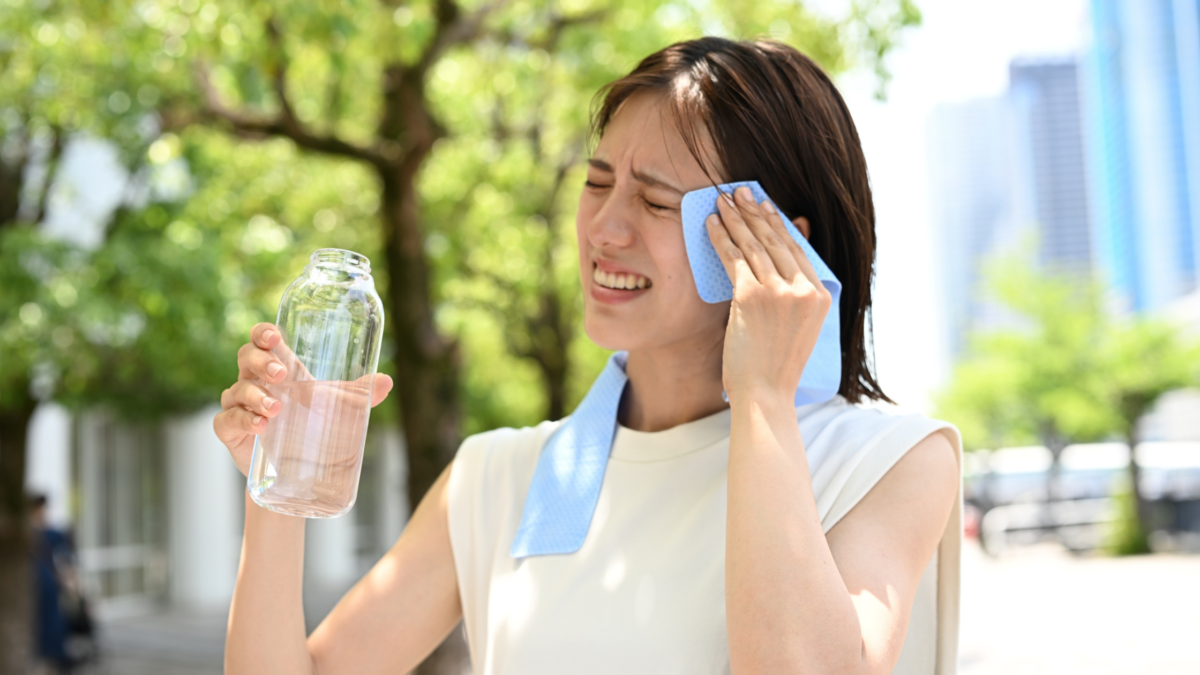


Medically Reviewed By Margaret Etudo. Written By The Vitamins For Woman Team.
One woman found relief from hot flashes through soy after dismissing it for months. Her story is a reminder that every woman’s menopause journey is different, and what works for one might not work for another.

Hot flashes can be one of the most frustrating symptoms of menopause. For many women, they disrupt sleep, affect mood, and make everyday life uncomfortable.
One woman shared her experience of struggling with daily hot flashes for months before trying soy, something she had ignored because others said it didn’t help them. To her surprise, after adding tofu and soy milk to her diet, her hot flashes disappeared within a day and stayed away for weeks.
Her story highlights an important truth: menopause solutions are not one-size-fits-all. Our bodies respond differently to diet and lifestyle changes, and sometimes the simplest adjustments can make a big difference.
Soy contains compounds called isoflavones, which are plant-based phytoestrogens. These compounds have a structure similar to estrogen and can weakly bind to estrogen receptors in the body. Research has explored whether soy can help with menopause symptoms, especially hot flashes.
According to a study published in the American Journal of Epidemiology (Nagata et al., 2001), women with higher soy intake reported fewer hot flashes compared to those with lower intake. Another review of clinical studies found that isoflavone supplements were associated with a modest reduction in the frequency and severity of hot flashes (Messina, 2014).
However, not everyone benefits equally. About 30 percent of people in Western countries have the gut bacteria needed to convert soy isoflavones into equol, a compound believed to have stronger estrogen-like effects (Setchell & Cole, 2006). Diet, especially one rich in plant-based and fermented foods, can influence the presence of these bacteria.
Several women have shared that incorporating soy, sweet potatoes, and walnuts helped reduce their hot flashes. These foods contain phytoestrogens or nutrients that support hormonal balance.
Others have found success with soy protein shakes, both as a source of plant protein and as a way to get consistent amounts of isoflavones. If soy alone isn’t effective, gradually shifting toward a more plant-based diet that includes fermented foods may help the body better utilize soy isoflavones.
A balanced diet rich in vegetables, whole grains, legumes, and nuts supports overall gut health, which plays a role in hormone metabolism.

For women who don’t regularly eat soy foods, soy isoflavone supplements may be an option. Some supplements provide a standardized dose of isoflavones, which makes it easier to track intake compared to food sources.
If you’re curious, a high-quality soy isoflavone supplement like this one can be a simple way to see if soy helps your symptoms. Another option is a plant-based menopause support blend that includes soy extract along with other phytoestrogen-rich herbs.
As with any supplement, it’s best to consult your healthcare provider first, especially if you have a history of hormone-sensitive conditions
The key lesson from this story is that every woman’s body responds differently. What doesn’t work for someone else might work for you. Menopause is a unique journey, and finding relief often requires some trial and error.
Instead of dismissing a solution because it didn’t help another person, it may be worth trying if it’s safe and supported by research.
Your menopause journey is personal, and there’s no single right approach. Soy isoflavones may provide relief for some women, and for others, different strategies may be more effective.
If you want to explore soy-based options, try starting with whole foods like tofu or soy milk and consider adding a trusted soy supplement. Always check with your healthcare provider before starting a new supplement.
Remember, finding what works for you is the most empowering step you can take. You deserve to feel your best as you navigate this stage of life.
Messina, M. (2014). Soy foods, isoflavones, and the health of postmenopausal women. The American Journal of Clinical Nutrition, 100(Suppl 1), 423S–430S. https://pubmed.ncbi.nlm.nih.gov/24898224/
Nagata, C., Takatsuka, N., Kawakami, N., & Shimizu, H. (2001). Soy product intake and hot flashes in Japanese women: Results from a community-based prospective study. American Journal of Epidemiology, 153(8), 790–793. https://pubmed.ncbi.nlm.nih.gov/11296152/
Setchell, K. D. R., & Cole, S. J. (2006). Method of defining equol-producer status and its frequency among vegetarians. Journal of Nutrition, 136(8), 2188–2193. https://pubmed.ncbi.nlm.nih.gov/16857839/

medically reviewed by margaret etudo, BPharm. written by the vitamins for woman team.